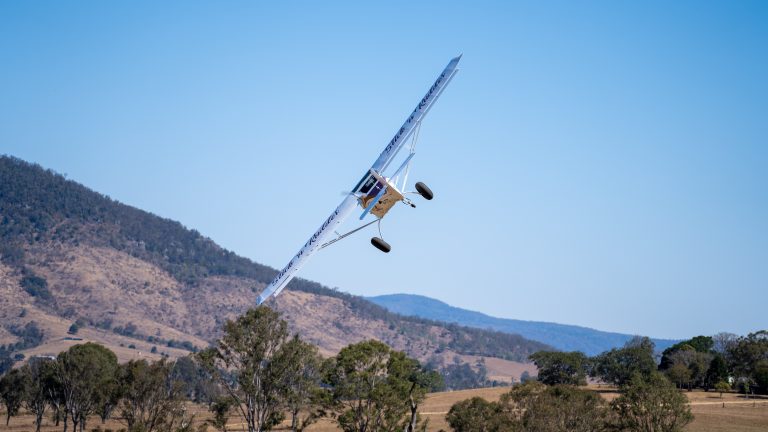WHY WE FOCUS ON DEFENSIVE FLYING

Here at Stick n’ Rudder, Defensive Flying is something we focus on in our courses. It’s the act of a pilot developing their skillset to a level in which they can recognise and recover an aircraft from an undesirable situation. It’s very much like defensive driving, but in the air.
In this blog, we explore the importance of defensive flying, what it enables our pilots to do and why we focus on it.
Why is Defensive Flying important?
Although aircrafts have evolved over time to become intrinsically safe, the number one cause of accidents is still a pilot’s “loss of control”. In other words, the pilot mishandles the aeroplane, aggravating the situation and ultimately leading to an incident or accident.
This really highlights the importance of providing future pilots with defensive flying skills to maintain the highest possible safety margins. It’s all about making pilots safe in the skies whilst doing what they love.
What does Defensive Flying enable pilots to do?
Having undertaken our flight training courses that integrate defensive flying elements, ensures that our pilots can handle the aircraft through its full flight envelope. If they do inadvertently go outside of this envelope, they will have the knowledge and skill to return the aircraft back to normal operations.
Not only does this training maintain safety, but it allows pilots to fly with confidence, knowing they have the skills to keep themselves safe.
How does Stick n’ Rudder focus on Defensive Flying?
We have designed our training courses to integrate elements of defensive flying, along with carefully selecting the right aircraft which have inherently more suitable flying characteristics to this type of training.
By design, the tailwheel aircraft requires a lot more focus and attention to slow speed flight and aircraft handling. This is because during the landing phase, these aircrafts land at lower speeds and higher angles of attack in comparison to tricycle gear (nosewheel) aircrafts.
Ensuring our pilots are competent at the slow speed and high angle of attack flight is critical as the majority of ‘loss of control’ situations occur here.
Which courses focus on Defensive Flying?
Most of our courses integrate elements of defensive flying training throughout them.
Our “Recreational Pilot Certificate – RPC” is the place where all pilots start, and this course has a significant amount of defensive flying elements.
Why? Pilots will default to their initial training or first taught behaviours when in a high-stress situation like an emergency or mishandled aircraft state. Therefore building defensive flying skills from the start is absolutely critical to keeping pilots safe early on in their training and well into the future.
What does this Defensive Flying training entail?
Before flying solo, our pilots are exposed to:
- Slow flight at high angles of attack very early in their training
- Stalling
- Advanced stalls with wing drops
- Unusual attitude recoveries
Our priority is to keep our pilots safe for this flight by themselves. After this point in their training, we develop this skillset more with scenario-based training, replicating common situations in which pilots commonly mishandle the aeroplane. This removes the fear element in the event they do mishandle the aircraft.
As the finish line of the Pilot Certificate approaches all our students conduct training on our exclusive bush strips in our western training area. Taking all their previously learnt skills into a more challenging environment that requires a higher level of risk analysis and management. This means if our pilots need to operate the aircraft close to its limits in a challenging environment, this can be achieved safely – they haven’t just been exposed to the nice long and wide runways of our home airfield.
For pilots that haven’t learnt to fly with is, our “Tailwheel Course” is a perfect opportunity to develop their skills and can even take it further by undergoing our “Bush Flying” training courses.
Ready to become a defensive flying pilot?
Our aim is to not just teach pilots how to fly but how to fly defensively and be prepared for any situation that may arise. This ultimately makes them more competent and confident pilots when taking to the skies.
